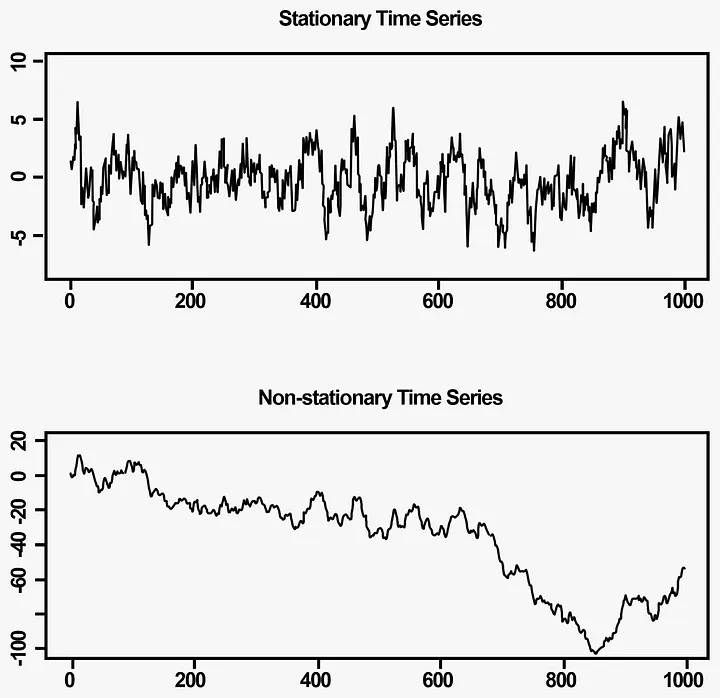In time series, stationarity means dependence of previous observations “declines” over time, or formally, assumes the process’s statistical properties are time-invariant.
- Strict Stationarity: The joint distribution of equals that of for all and . Implies constant mean and variance, and .
- Weak (Second-Order) Stationarity: Requires constant mean and for all and . Used throughout the book unless specified otherwise.
For stationary processes, we denote , , with properties: , , , .

TODO Common solution to stationary data is to use differencing. Differencing works for these: 
But not these: 
See also
Examples
White Noise
Defined as , i.i.d. with , :
| Property | Expression |
|---|---|
| Mean | |
| Autocovariance | |
| Autocorrelation | |
| Stationarity | Strict and weak |
Random Cosine Wave
Defined as , where :
| Property | Expression |
|---|---|
| Mean | |
| Autocovariance | |
| Autocorrelation | |
| Stationarity | Weak |
Nonstationary Example: Random Walk
Variance and covariance (for ) depend on , not just , so not stationary. Differencing yields a stationary process (white noise).
See Random Walk